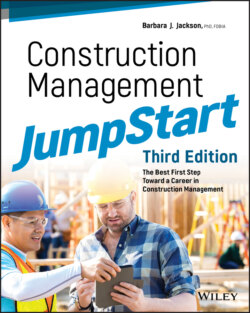Читать книгу Construction Management JumpStart - Barbara J. Jackson - Страница 61
NOTE
ОглавлениеI once asked the president of an international environmental construction firm why he left the commercial building side of the industry to dedicate his life to building water systems and sewage treatment plants. He told me he got bored with commercial construction. He admitted that it may seem “sexier” to build high-rises, but in reality, when you spend your day building facilities that ensure a clean and fresh water supply, safe and sanitary wastewater treatment, and a healthy environment for communities, then you go home at night knowing you made a difference, whether anyone notices or not.
Furthermore, you will find yourself working with individuals beyond the usual group of construction colleagues. In environmental construction it is not unusual to be collaborating with chemists, biologists, ecologists, and other scientists who deal with the actual quality of the water, soil, and other materials that flow through or interact with the systems that you build. As you can see, there are many opportunities to expand your knowledge and learning beyond construction in this sector of the industry.
Similar to the heavy civil industry, environmental construction projects are usually not a luxury item—they are necessities. And given the current state of our existing municipal water and wastewater systems in the United States (many are 50 or more years old—the entire life expectancy of a typical system), and the fact that most projects are publicly funded, we will see a great deal of work in this area and, therefore, the need for construction managers who have a propensity toward projects that support the environment.
